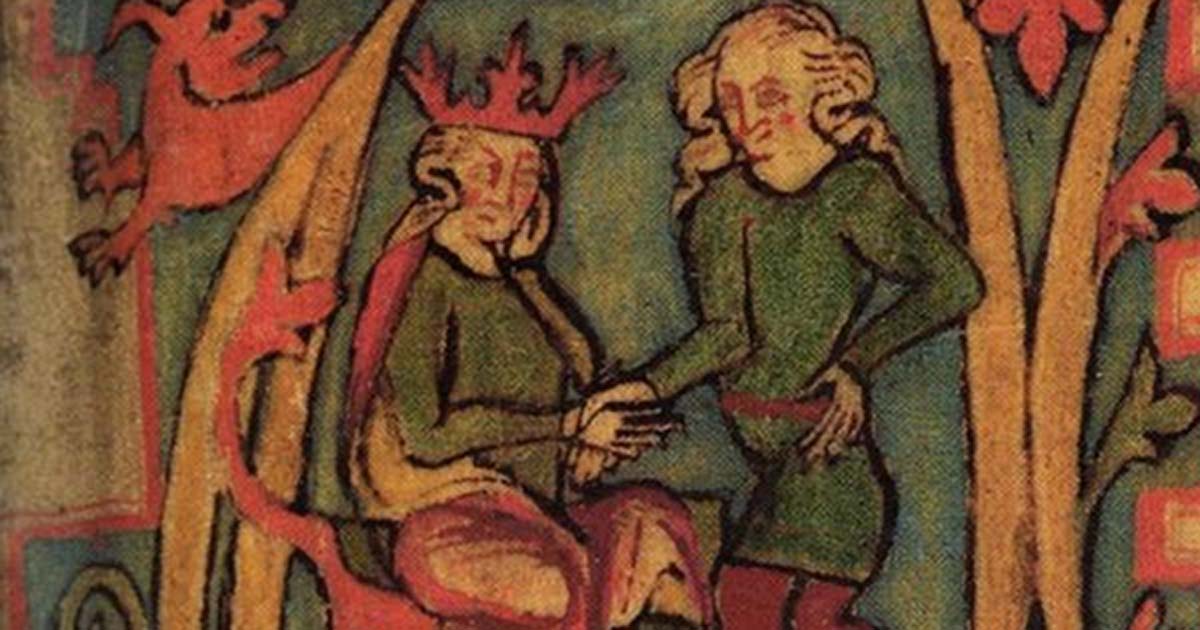Icelander Sagas May Have More Truth to Them than You Think
Myths and legends – purely the creation of creative and imaginative minds, right? Not necessarily. Numerous stories, sagas, and texts from the ancient past have been proven to hold facts. For example, a 2013 study validates an intriguing idea presented in the Icelander Sagas - Vikings were probably less brutal than many people assume.
From its beginnings in Greece, the word mythos, English ‘myth’, was rooted in truth. In Greek it means ‘word’, ‘tale’, or ‘true narrative.’ The Greek word is also closely tied to myo, which means ‘to teach’, or ‘to initiate into the mysteries’. When Homer composed his works such as The Iliad he had the idea in mind that myth conveys truth.

A page from a skin manuscript of Landnámabók, a primary source on the settlement of Iceland. (Public Domain)
About 400 years later, myths had become known as fiction, superstition, and fantasy. They were considered symbolic, not factual, as the concept of truth was picked apart by science and philosophy.
- The Viking Discovery of Iceland
- The Icelandic Theory: Experts Challenge Establishment Dogma to Reveal History of Ivory Vikings
- Lessons from the Hidden World: Icelanders believed in elves, but it is probably not what you think
Nonetheless, the original meaning of the word myth came back again as archaeology and research have proven many legendary stories from the past hold truth at their core. For example, the once legendary city of Troy has been found, and many sea monsters drawn on ancient maps have been identified as real animals, such as giant squid, walruses, and dugongs.
Truth in can be found in the Icelandic Sagas as well. For instance, a so-called ‘magical gem’ known as a Viking Sunstone was once used to navigate the seas. It is spoken of in the sagas and has been proven to be a real crystal made of a calcite substance. This type of stone has been found in a shipwreck. Viking artifacts discovered on an island of Denmark show the legendary city of Lejre, discussed in “myth” actually existed.

A calcite crystal found on an Elizabethan ship believed to have helped the Vikings navigate the seas. Credit: The Natural History Museum
The Icelandic Sagas provide insight on Scandinavian and Germanic history. They discuss early Viking voyages and battles that occurred while at sea, provide information on migration to Iceland, and mention feuds that took place between Iceland’s earliest families.

Norsemen landing in Iceland. (Public Domain )
These stories were written between 1100 and 1300 AD in the Old Norse language. Most of the tales were written on Iceland, but some refer to the lives of people who lived before 1000 AD. The majority of the stories are written in a realistic way, but some are embellished with fictional elements. Nevertheless, they all deal with human beings in a way you can understand.
- The Sagas of the Icelanders shed light on Golden Age
- Galdrabok, The Medieval Grimoire That Sheds Light on the Occult Practices of Iceland
- Did a Native American travel with the Vikings and arrive in Iceland centuries before Columbus set sail?

Gettir is ready to fight in this illustration from a 17th-century Icelandic manuscript. (Public Domain)
In 2013, a study published in the European Physical Journal provided a thorough analysis of the relationships discussed in the Icelandic Sagas. It showed a world of complex social networks and challenged the typical view of Vikings as savage people.
By following the interactions of over 1,500 characters that appear in 18 sagas, including five famous epic tales, the researchers from the University of Coventry found that the ‘saga society’ parallels what is found in a real social network. This supports the idea that the Icelandic Sagas were based on reality, though with some fictional distortion at times.

The saga museum contains figures like these which tell the history of early Iceland - the saga age. (Jeffery Simpson/CC BY NC SA 2.0)
Top Image: King Haraldr hárfagri receives the kingdom out of his father's hands. From the 14th century Icelandic manuscript Flateyjarbók. Source: Public Domain

















